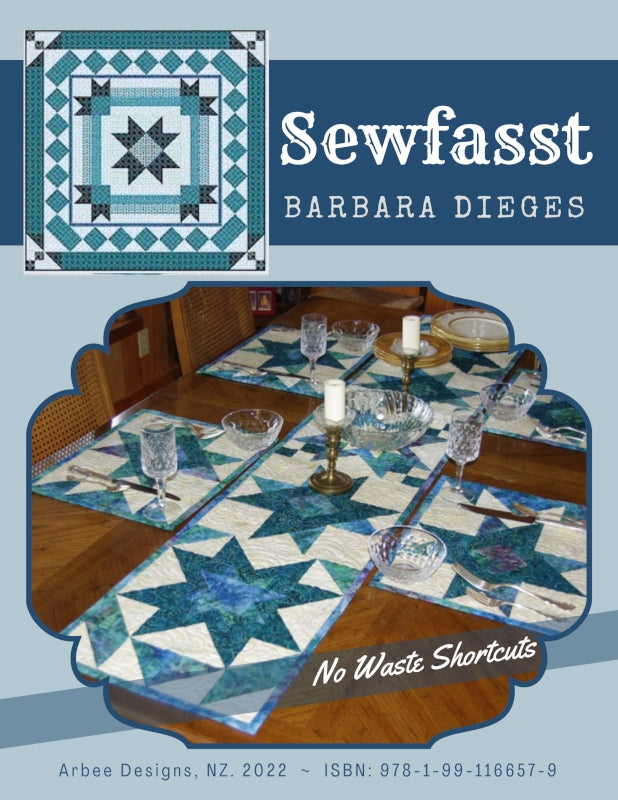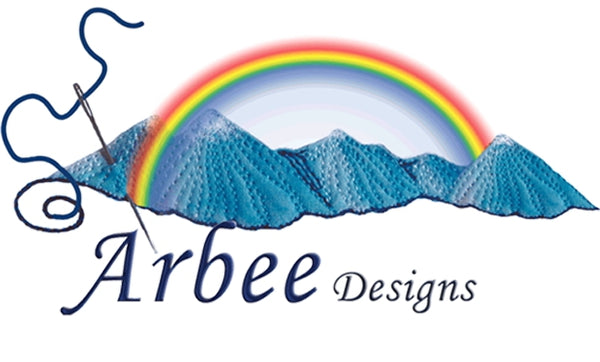
- Description
- Requirements
Tired of sewing tiny fabric pieces together and dealing with tricky bias edges? Discover Barbara’s Sewfasst Techniques, a revolutionary strip piecing method that saves time, minimizes fabric waste, and even creates Bonus Patches for extra projects! In this comprehensive eBook, you'll master square diamonds, flying geese, quarter square patches, four-patches, and half-square triangles—all constructed using just squares and rectangles. Whether you're making samples or incorporating these techniques into your next quilt, this method is designed for quilters of all skill levels. Start piecing smarter today!
We will look at a few of the many blocks that use these units and discuss how to adjust the sizes to fit your needs. Making the small project included is optional. The process is emphasized. Make samples or incorporate the techniques in a project of your choice. All levels of experience.
This ebook also includes a bonus table runner and placemat pattern.
Originally presented as an online workshop, this class is now available as a printable ebook.
OUTLINE
Part One
- Importance of 1/4" seam allowance
- Use of seam guides
- Sewfasst pieced 4-Patch units
- Sewfasst pieced Half Square Triangles
- Marking seam lines
- Sewfasst Double Flying Geese
Part Two
- Sewfasst pieced Square on Point
- Sewfasst pieced Quarter Square Triangle
- Assembling quilt center
- Sewfasst pieced Three Quarter Square Triangle
- Assembling the quilt top
Part Three
- Review of blocks using Sewfasst patches
- 4-Patch blocks and variations
- 9-Patch blocks and variations
- Resizing and evaluating blocks
Fabric
We will be working with squares and rectangles. Strips should be cut across the width of the fabric, from selvage to selvage.
At least three different values of fabrics are needed to make samples: light, medium and dark. Fat Quarters (18" x 22") or scraps with a minimum size of 6" square.
If you plan on making one of the projects, when working with the techniques use fabrics other than the ones used for the projects. This is the time to use scraps or leftovers.
Save the technique samples, by stapling them to the instruction pages or put them in clear sleeves. The point is to not use your "good" fabric, to "practice" the techniques.
Optional Projects: If you would prefer to make the small quilt or the table runner and placemats, here is what you will need, the colors I used are in parenthesis:
Table Runner And Six Placemats
- Table runner (12" x 60") - Place mats (12" x 15" each):
- 3/4 yard Dark Fabric (Teal)
- 1-1/8 yards Background (Off-white)
- 7/8 yard Medium Fabric (Aqua)
- Backing 2 yards or so of Dark or Medium or use a fourth
- fabric
- Binding 1-1/4 yards of Dark or Medium or use a fourth
- fabric
- Thin batting Hobb’s Thermore suggested
Small Quilt
- 5/8 yard Dark Fabric (brown print - use a couple of different coordinating ones, adding up to that amount)
- 3/4 yard Light Fabric for the background (beige print)
- 1/2 yard Medium Fabric (green print)
- 1/4 yard coordinating large print (brown/rust)
- Backing 1-1/4 yards fabric
- Binding 3/8 yard of Dark or Medium or use a fourth fabric
- Batting of your choice 45" square
Tools and Supplies
- rotary cutting mat, cutter and ruler (ruler should have clear 1/4" markings)
- White pencil that can be sharpened and a small sharpener or
- Clover's White Marking Pen, makes a ne line on dark fabric
- .01 PIGMA pen or .05 mechanical pencil
- 100% cotton thread, preferably to match the lightest fabric. If you are just making samples, you might want to use up leftover threads
- straight pins
- small scissors for cutting threads
- iron and ironing pad
- sewing machine. Replace your needle.
- Schmetz Jeans/Denim needles #80. We are not sewing denim, but these are sharp needles that will sew easily through layers of fabric.
- It is also helpful to have a foot that gives a scant 1/4" seam, but is not necessary as long as you know where that point is on your machine. You can check our online Library for hints on marking your machine.
*Optional: Quick Quarter Marker (1/2" wide ruler for marking 1/4" seam allowance) from Quilter's Rule. I urge you to get this tool, it is really helpful. The picture shows two sizes, the Quick Quarter Marker II is the longer one and the most useful. The tool also comes in yellow.
This is another scant 1/2" ruler from Omnigrid. The reason I say scant is that when lines are drawn a slight amount of width is added. This 12" ruler comes in a set with a 6" ruler.
- Choosing a selection results in a full page refresh.
- Opens in a new window.

